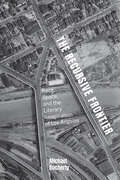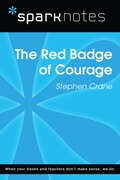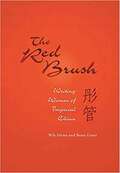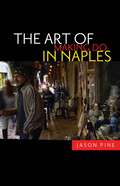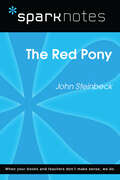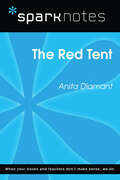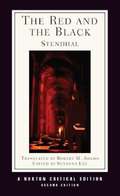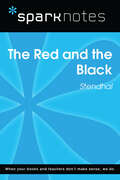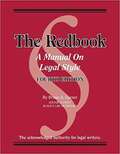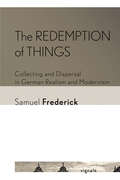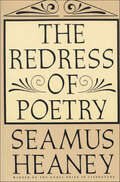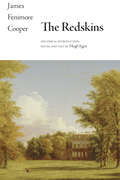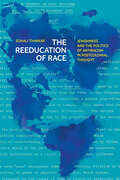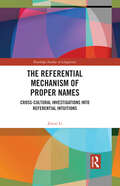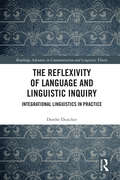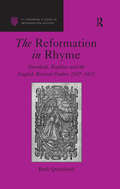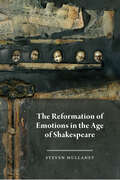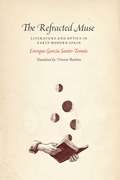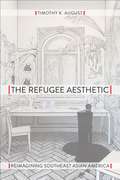- Table View
- List View
The Recursive Frontier: Race, Space, and the Literary Imagination of Los Angeles (SUNY series in Multiethnic Literatures)
by Michael DochertyThe Recursive Frontier is an innovative spatial history of both the literature of Los Angeles and the city itself in the mid-twentieth century. Setting canonical texts alongside underexamined works and sources such as census bulletins and regional planning documents, Michael Docherty identifies the American frontier as the defining dynamic of Los Angeles fiction from the 1930s to the 1950s. Contrary to the received wisdom that Depression-era narratives mourn the frontier's demise, Docherty argues that the frontier lives on as a cruel set of rules for survival in urban modernity, governing how texts figure race, space, mobility, and masculinity. Moving from dancehalls to offices to oil fields and beyond, the book provides a richer, more diverse picture of LA's literary production during this period, as well as a vivid account of LA's cultural and social development as it transformed into the multiethnic megalopolis we know today.
The Red Badge of Courage (SparkNotes Literature Guide Series)
by SparkNotesThe Red Badge of Courage (SparkNotes Literature Guide) by Stephen Crane Making the reading experience fun! Created by Harvard students for students everywhere, SparkNotes is a new breed of study guide: smarter, better, faster. Geared to what today's students need to know, SparkNotes provides: *Chapter-by-chapter analysis *Explanations of key themes, motifs, and symbols *A review quiz and essay topicsLively and accessible, these guides are perfect for late-night studying and writing papers
The Red Brush: Writing Women of Imperial China (Harvard East Asian Monographs #231)
by Beata Grant Wilt L. IdemaOne of the most exciting recent developments in the study of Chinese literature has been the rediscovery of an extremely rich and diverse tradition of women's writing of the imperial period (221 B.C.E.-1911 C.E.). <p><p> Many of these writings are of considerable literary quality. Others provide us with moving insights into the lives and feelings of a surprisingly diverse group of women living in Confucian China, a society that perhaps more than any other is known for its patriarchal tradition. <p><p> Because of the burgeoning interest in the study of both premodern and modern women in China, several scholarly books, articles, and even anthologies of women's poetry have been published in the last two decades. This anthology differs from previous works by offering a glimpse of women's writings not only in poetry but in other genres as well, including essays and letters, drama, religious writing, and narrative fiction. <p><p> The authors have presented the selections within their respective biographical and historical contexts. This comprehensive approach helps to clarify traditional Chinese ideas on the nature and function of literature as well as on the role of the woman writer.
The Red Land to the South: American Indian Writers and Indigenous Mexico (Indigenous Americas)
by James H. CoxThe forty years of American Indian literature taken up by James H. Cox—the decades between 1920 and 1960—have been called politically and intellectually moribund. On the contrary, Cox identifies a group of American Indian writers who share an interest in the revolutionary potential of the indigenous peoples of Mexico—and whose work demonstrates a surprisingly assertive literary politics in the era.By contextualizing this group of American Indian authors in the work of their contemporaries, Cox reveals how the literary history of this period is far more rich and nuanced than is generally acknowledged. The writers he focuses on—Todd Downing (Choctaw), Lynn Riggs (Cherokee), and D&’Arcy McNickle (Confederated Salish and Kootenai)—are shown to be on par with writers of the preceding Progressive and the succeeding Red Power and Native American literary renaissance eras.Arguing that American Indian literary history of this period actually coheres in exciting ways with the literature of the Native American literary renaissance, Cox repudiates the intellectual and political border that has emerged between the two eras.
The Red Pony (SparkNotes Literature Guide Series)
by SparkNotesThe Red Pony (SparkNotes Literature Guide) by John Steinbeck Making the reading experience fun! Created by Harvard students for students everywhere, SparkNotes is a new breed of study guide: smarter, better, faster. Geared to what today's students need to know, SparkNotes provides: *Chapter-by-chapter analysis *Explanations of key themes, motifs, and symbols *A review quiz and essay topicsLively and accessible, these guides are perfect for late-night studying and writing papers
The Red Tent (SparkNotes Literature Guide Series)
by SparkNotesThe Red Tent (SparkNotes Literature Guide) by Anita Diamant Making the reading experience fun! Created by Harvard students for students everywhere, SparkNotes is a new breed of study guide: smarter, better, faster. Geared to what today's students need to know, SparkNotes provides: *Chapter-by-chapter analysis *Explanations of key themes, motifs, and symbols *A review quiz and essay topicsLively and accessible, these guides are perfect for late-night studying and writing papers
The Red and the Black (Norton Critical Editions)
by Susanna Lee Stendhal<p>Based again on Robert M. Adams’s highly regarded translation of Stendhal’s 1831 novel of ambition, love, and betrayal, this Second Norton Critical Edition of The Red and the Black is the most comprehensive and up-to-date edition available. <p>An extensively revised “Backgrounds and Contexts” section provides geographical and political insights into mid-nineteenth century France and places the novel in the context of contemporary authors and works. A map of 1830s France, political and literary chronologies, an account of the trial of Antoine Berthet, and related writings by Stendhal, Paul Valéry, and Jules Janin are included. <p>“Criticism” collects nine essays, seven of which are new to this edition, by Erich Auerbach, René Girard, Victor Brombert, Shoshana Felman, Peter Brooks, Sandy Petrey, Alison Finch, Lisa G. Algazi, and Susanna Lee.</p>
The Red and the Black (SparkNotes Literature Guide Series)
by SparkNotesThe Red and the Black (SparkNotes Literature Guide) by Stendhal Making the reading experience fun! Created by Harvard students for students everywhere, SparkNotes is a new breed of study guide: smarter, better, faster. Geared to what today's students need to know, SparkNotes provides: *Chapter-by-chapter analysis *Explanations of key themes, motifs, and symbols *A review quiz and essay topicsLively and accessible, these guides are perfect for late-night studying and writing papers
The Red and the Blacklist: The Intimate Memoir of a Hollywood Expatriate
by Norma BarzmanThe horrors of the McCarthy era.
The Redbook: A Manual on Legal Style
by Bryan GarnerBryan A. Garner's Redbook: A Manual on Legal Style, 4th Edition (Coursebook)
The Redemption of Things: Collecting and Dispersal in German Realism and Modernism (Signale: Modern German Letters, Cultures, and Thought)
by Samuel FrederickCollecting is usually understood as an activity that bestows permanence, unity, and meaning on otherwise scattered and ephemeral objects. In The Redemption of Things, Samuel Frederick emphasizes that to collect things, however, always entails displacing, immobilizing, and potentially disfiguring them, too. He argues that the dispersal of objects, seemingly antithetical to the collector's task, is essential to the logic of gathering and preservation. Through analyses of collecting as a dialectical process of preservation and loss, The Redemption of Things illustrates this paradox by focusing on objects that challenge notions of collectability: ephemera, detritus, and trivialities such as moss, junk, paper scraps, dust, scent, and the transitory moment. In meticulous close readings of works by Gotthelf, Stifter, Keller, Rilke, Glauser, and Frisch, and by examining an experimental film by Oskar Fischinger, Frederick reveals how the difficulties posed by these fleeting, fragile, and forsaken objects help to reconceptualize collecting as a poetic activity that makes the world of scattered things uniquely palpable and knowable.
The Redress of Poetry
by Seamus HeaneyHeaney's ten lectures as Professor of Poetry at Oxford, collected here in The Redress of Poetry, explore the poetry of a wide range of writers, from Christopher Marlowe to John Clare to Oscar Wilde. Whether he concentrates on moments in the works under discussion, or is concerned to advance his general subject, Heaney's insight and eloquence are themselves of poetic order.
The Redskins (The Writings of James Fenimore Cooper)
by James Fenimore CooperThe Redskins, James Fenimore Cooper's 1846 novel about the Anti-Rent Wars in upstate New York, is now available in a scholarly edition. The final work in the "Littlepage trilogy," The Redskins includes Cooper's enduring theme of Indigenous-White relations but examines it in the context of contemporary tensions between wealthy landlords and their tenant farmers in the Hudson Valley region. The work is narrated in the voice of a privileged landowner who presents an impassioned defense of the aristocratic class in America and thus raises cardinal questions regarding Cooper's own intentions and authorial control. Cooper himself was often derided as an "aristocrat" in this later phase of his career, and the novel can be read as both an endorsement of and a rebuttal to that judgment. Edited by Hugh Egan, this volume includes extensive historical background material as well as pertinent textual notes based on the original manuscript. As part of the series in the Writings of James Fenimore Cooper, this MLA-approved edition of The Redskins will serve as the definitive text for future teachers and scholars alike.The Writings of James Fenimore Cooper The distinguished Cooper scholar James Franklin Beard (1919–1989) began organizing the Writings of James Fenimore Cooper in the late 1960s, as his work on publishing the monumental Letters and Journals of James Fenimore Cooper came to fulfillment. Beard's intention was to provide readers with sound scholarly editions of Cooper's major works, based wherever possible on authorial manuscripts. To date, the Writings of James Fenimore Cooper has made available texts of many of Cooper's best-known novels, as well as some of his most important works of political and social commentary.
The Reeducation of Race: Jewishness and the Politics of Antiracism in Postcolonial Thought (Stanford Studies in Comparative Race and Ethnicity)
by Sonali ThakkarWorld War II produced a fundamental shift in modern racial discourse. In the postwar period, racism was situated for the first time at the center of international political life, and race's status as conceptual common sense and a justification for colonial rule was challenged with new intensity. In response to this crisis of race, the UN and UNESCO initiated a project of racial reeducation. This global antiracist campaign was framed by the persecution of Europe's Jews and anchored by UNESCO's epochal 1950 Statement on Race, which redefined the race concept and canonized the midcentury liberal antiracist consensus that continues to shape our present. In this book, Sonali Thakkar tells the story of how UNESCO's race project directly influenced anticolonial thought and made Jewish difference and the Holocaust enduring preoccupations for anticolonial and postcolonial writers. Drawing on UNESCO's rich archival resources and shifting between the scientific, social scientific, literary, and cultural, Thakkar offers new readings of a varied collection of texts from the postcolonial, Jewish, and Black diasporic traditions. Anticolonial thought and postcolonial literature critically recast liberal scientific antiracism, Thakkar argues, and the concepts central to this new moral economy were the medium for postcolonialism's engagement with Jewishness. By recovering these connections, she shows how the midcentury crisis of racial meaning shaped the kinds of solidarities between racialized subjects that are thinkable today.
The Referential Mechanism of Proper Names: Cross-cultural Investigations into Referential Intuitions (Routledge Studies in Linguistics)
by Jincai LiEach of us bears a unique name given to us at birth. When people use your name, they typically refer to you. But what is the linkage that ties a name to a person and hence allows it to refer? Li’s book approaches this question of reference empirically through the medium of referential intuitions. Building on the literature on philosophical and linguistic intuitions, she proposes a linguistic-competence-based account of referential intuitions. Subsequently, using a series of novel experiments, she investigates the variation of referential intuitions across different cultures, as well as the developmental trajectory and the underlying causes of the observed cultural differences. What she finds is that the cultural patterns of referential intuitions are already in place around age seven, and the differences are largely attributable to the distinct perspective taking strategies favoured by easterners and westerners, rather than the moral valence of actions involved in the experimental materials. These results are taken to better support referential pluralism (in particular, the ambiguous view) than referential monism. By undertaking this fascinating research, Li’s book provides new insights into the cognitive mechanisms underlying people’s referential usage of names. It will be valuable to students and scholars of linguistics, philosophy of language and experimental philosophy, and in particular, to those who research into semantic intuitions and theories of reference.
The Reflexivity of Language and Linguistic Inquiry: Integrational Linguistics in Practice (Routledge Advances in Communication and Linguistic Theory)
by Dorthe DunckerThis book explores the reflexivity of language both from the perspective of the lay speaker and the linguistic analyst. Linguistic inquiry is conditional upon linguistic reflexivity, but so is language. Without linguistic reflexivity, we would not be able to make sense of everyday linguistic communication, and the idea of a language would not be conceivable. Not even fundamental notions such as words or meaning would exist. Linguistic reflexivity is a feature of the communication process, and it essentially depends on situated participants and time. It is a defining characteristic of the human language but despite its obvious importance, it is not very well understood theoretically, and it is strangely under-researched empirically. Throughout history and in modern linguistics, it has mostly either been taken for granted, misconstrued, or ignored. Only integrational linguistics fully recognizes its specifically linguistic implications. However, integrational linguistics does not provide the necessary methodological basis for investigating linguistic phenomena empirically. This catch-22 situation means that the goal of the book is twofold: one part is to explore the reflexivity of language theoretically, and the other part is to propose an applied integrational linguistics and to implement this proposal in practice.
The Reformation in Rhyme: Sternhold, Hopkins and the English Metrical Psalter, 1547–1603 (St Andrews Studies in Reformation History)
by Beth QuitslundThe Whole Booke of Psalmes was one of the most published and widely read books of early modern England, running to over 1000 editions between the 1570s and the early eighteenth century. It offered all of the Psalms paraphrased in verse with appropriate tunes, together with an assortment of other scriptural and non-scriptual hymns, and prose prayers for domestic use. Because the Elizabethan Church rapidly and pervasively (if unofficially) adopted this metrical psalter for congregational singing, and because it had in practical terms no rivals for church use until the end of the seventeenth century, essentially the entire conforming population of early modern England after 1570 would have been familiar with its psalms and hymns as elements of both public worship and private devotion. Yet, despite the significant impact of The Whole Booke of Psalmes upon English culture and literature, this is the first book-length study of it, and the first sustained critical examination of the texts of which it comprises. In large part this neglect is due to the reputation it gained after the mid-seventeenth century as a work of poor poetry mainly valued by vulgar and/or sectarian audiences. This later reception, however, was the product of not only changing literary tastes but an ideological desire to reshape the history of the Reformation. This study focuses on the actual aims of its authors and editors over the course of its gradual composition during the tumultuous religious changes of the mid-sixteenth century, and recovers its significant influence on the English church and literary practice. By tracing the ways in which historical contingency, religious fervor and the print marketplace together created and were changed by one of the most successful books of English verse ever printed, this study opens a new window through which to view the intellectual and ecclesiastical culture of Tudor England. It also shows how, in metrical psalmody, Protestant reformers discovered what turned out to be a uniquely flexible and effective instrument for advancing their vision of a godly society.
The Reformation of Emotions in the Age of Shakespeare
by Steven MullaneyThe crises of faith that fractured Reformation Europe also caused crises of individual and collective identity. Structures of feeling as well as structures of belief were transformed; there was a reformation of social emotions as well as a Reformation of faith. As Steven Mullaney shows in The Reformation of Emotions in the Age of Shakespeare, Elizabethan popular drama played a significant role in confronting the uncertainties and unresolved traumas of Elizabethan Protestant England. Shakespeare and his contemporaries--audiences as well as playwrights--reshaped popular drama into a new form of embodied social, critical, and affective thought. Examining a variety of works, from revenge plays to Shakespeare's first history tetralogy and beyond, Mullaney explores how post-Reformation drama not only exposed these faultlines of society on stage but also provoked playgoers in the audience to acknowledge their shared differences. He demonstrates that our most lasting works of culture remain powerful largely because of their deep roots in the emotional landscape of their times.
The Reformation: Activity Book (Amplify Core Knowledge Language Arts, Grade 5 #Unit 6)
by Amplify EducationNIMAC-sourced textbook
The Reformation: Reader (Amplify Core Knowledge Language Arts, Grade 5 #Unit 6)
by Amplify EducationNIMAC-sourced textbook
The Reformation: Shifts in Power, Reader (Amplify Core Knowledge Language Arts)
by Amplify LearningUnit 6 texts focus on the topic of the Reformation movement in European history.
The Refracted Muse: Literature and Optics in Early Modern Spain
by Enrique García Santo-TomásGalileo never set foot on the Iberian Peninsula, yet, as Enrique García Santo-Tomás unfolds in The Refracted Muse, the news of his work with telescopes brought him to surprising prominence—not just among Spaniards working in the developing science of optometry but among creative writers as well. While Spain is often thought to have taken little notice of the Scientific Revolution, García Santo-Tomás tells a different story, one that reveals Golden Age Spanish literature to be in close dialogue with the New Science. Drawing on the work of writers such as Cervantes, Lope de Vega, Calderón de la Barca, and Quevedo, he helps us trace the influence of science and discovery on the rapidly developing and highly playful genre of the novel. Indeed, García Santo-Tomás makes a strong case that the rise of the novel cannot be fully understood without taking into account its relationship to the scientific discoveries of the period.
The Refugee Aesthetic: Reimagining Southeast Asian America (Asian American History & Cultu #222)
by Timothy K. AugustThe refugee is conventionally considered a powerless figure, eagerly cast aside by both migrant and host communities. In his book, The Refugee Aesthetic, Timothy August investigates how and why a number of Southeast Asian American artists and writers have recently embraced the figure of the refugee as a particularly transformative position. He explains how these artists, theorists, critics, and culture-makers reconstruct their place in the American imagination by identifying and critiquing the underlying structures of power that create refugees in the contemporary world. August looks at the outside forces that shape refugee representation and how these expressions are received. He considers the visual legacy of the Southeast Asian refugee experience by analyzing music videos, graphic novels, and refugee artwork. August also examines the power of refugee literature, showing how and why Southeast Asian American writers look to the refugee position to disentangle their complicated aesthetic legacy. Arguing that “aesthetics” should be central to the conceptualization of critical refugee studies, August shows how representational structures can galvanize or marginalize refugees, depending on how refugee aesthetics are used and circulated.
The Refugee Aesthetic: Reimagining Southeast Asian America (Asian American History & Cultu #222)
by Timothy K. AugustThe refugee is conventionally considered a powerless figure, eagerly cast aside by both migrant and host communities. In his book, The Refugee Aesthetic, Timothy August investigates how and why a number of Southeast Asian American artists and writers have recently embraced the figure of the refugee as a particularly transformative position. He explains how these artists, theorists, critics, and culture-makers reconstruct their place in the American imagination by identifying and critiquing the underlying structures of power that create refugees in the contemporary world. August looks at the outside forces that shape refugee representation and how these expressions are received. He considers the visual legacy of the Southeast Asian refugee experience by analyzing music videos, graphic novels, and refugee artwork. August also examines the power of refugee literature, showing how and why Southeast Asian American writers look to the refugee position to disentangle their complicated aesthetic legacy. Arguing that “aesthetics” should be central to the conceptualization of critical refugee studies, August shows how representational structures can galvanize or marginalize refugees, depending on how refugee aesthetics are used and circulated.
The Regal Phantasm: Shakespeare and the Politics of Spectacle (Routledge Revivals)
by Christopher PyeFirst published in 1989, this title explores the relationship between theater and power in the English Renaissance. Shakespeare’s Henry V, Richard II, and Macbeth are examined alongside a range of cultural materials, including philosophical and historical accounts of sovereignty, royal portraiture and representations of treason and punishment. Renaissance theater was far more than a vehicle for the expression of a political content: it played a constitutive role in forming the distinctive theory of sovereignty and the distinctive political subjectivity of the era. By reading Shakespeare’s plays in conjunction with other, ideologically charged forms of representation, the book continues new-historicist efforts to uncover the complex relations between literary texts and cultural contexts. Providing an interesting and detailed analysis, this reissue will be of value to students of Shakespeare and the English Renaissance, and those concerned with exploring the intersection between cultural analysis, post-structuralism, and psychoanalytic interpretation.
